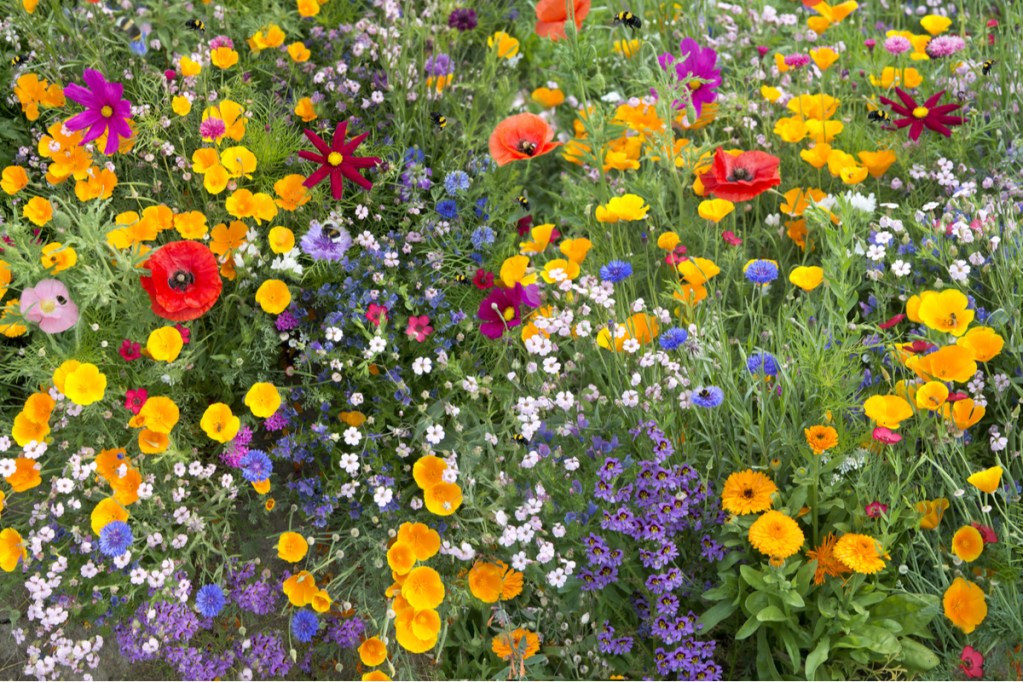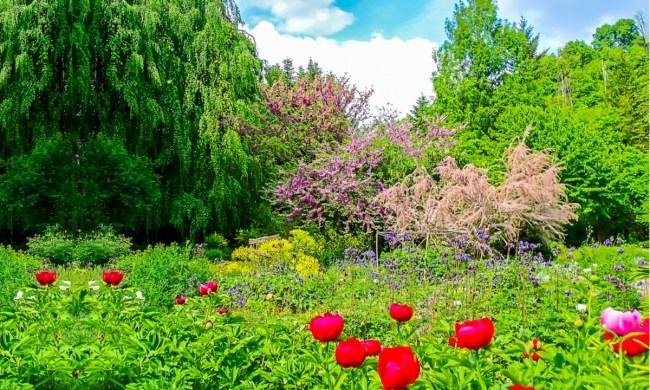Wildflowers make excellent additions to gardens, especially if they are native to your area. Pollinators and other wildlife love them, they’re easy to plant and grow, and they are incredibly beautiful. If you want to get started growing your own native wildflower garden, here are a few of our favorites to start with. No matter what aesthetic or colors you prefer, some of these gorgeous types of wildflowers are sure to delight you! From bluebonnets to beardtongue, here are our favorite types of wildflowers.
Bluebonnet

Bluebonnets aren’t just the state flower of Texas, they’re also a stunning blue wildflower. Native to the South and Southwest U.S., these lovely flowers can be annuals, perennials, or even biennials. While some of the more common bluebonnet varieties are darker blue, there are also lighter blue or slightly purple bluebonnet varieties available.
As prairie flowers, they prefer full sun, well-draining soil, and warm weather. Bluebonnets are particularly attractive to pollinators, especially bees. While they will attract other pollinators, such as butterflies, moths, and hummingbirds, bees, in particular, love bluebonnets thanks to their white banner spots. These bright white spots on the bluebonnet’s flowers act as a beacon for bees.
American basket flower

Named for the distinct basket weave pattern on the underside of its flowers, the American basket flower is a beautiful annual wildflower. It is native to the southern U.S., and while it is sometimes also called American starthistle, it isn’t actually a type of thistle. Thistles and basket flowers are both in the aster family, but they are in different genuses. They do have similar flower shapes, though.
These wildflowers prefer full sun and well-draining soil, but they also need a bit of space. American basket flowers can grow several feet tall, so be sure to give them room to grow.
Standing cypress

Standing cypress is a tall wildflower that’s native to much of the U.S. and is known for its vibrant orange or red flowers. These tube-shaped flowers are particularly attractive to hummingbirds, although other pollinators will be drawn to them as well. Also called flame flowers, Texas plume, and scarlet gilia, standing cypress is a great addition to drought-tolerant gardens.
They thrive in dry, rocky soil and prefer full sun. Standing cypress is a self-seeding biennial flower, so plant this lovely wildflower two years in a row for yearly flowers. Thanks to the sheer number of flowers that bloom on a single stem, standing cypress flowers are also quite popular as cut flowers.
Coneflower

Purple coneflowers may be the most common, but there are many types of coneflowers you can choose from when planning your flower garden. Echinacea comes in an array of colors, and it is native to the woodlands and meadows of the eastern U.S. In addition to the classic purple coneflower, you might be interested in the pale purple coneflower Echinacea pallida, which has longer, thinner petals similar to that of a spider lily or the yellow coneflower Echinacea paradoxa, which brings a brighter color to the familiar coneflower shape.
Of course, there are also coneflower look-alikes, such as the prairie coneflower Ratibida. These relatives of black-eyed Susans are also native wildflowers, and they resemble coneflowers but with a much taller center.
Blue flax

Native to the western U.S., blue flax is a charming wildflower perfect for smaller gardens. With thin stems and leaves and small blue flowers, this wildflower looks delicate but is surprisingly sturdy. It’s a perennial wildflower, although it has a relatively short lifespan of three to five years. Don’t worry, though — it’s a self-seeding plant, so even after the original plant has reached the end of its life, you’ll still see blue flax in your garden.
Blue flax can tolerate light shade, but it prefers full sun. Although blue flax appreciates regular watering, it can bounce back from droughts. If you’re looking for an easy wildflower for beginners or busy gardeners who don’t have much time to devote to high-maintenance plants, blue flax is ideal!
Beardtongue

Don’t let its unusual name fool you — beardtongue flowers are absolutely gorgeous. Also called penstemon, beardtongue is native to much of the U.S. Variety is one of the major appeals of this wildflower, as it comes in nearly every color and a wide range of shapes. They are also quite hardy and adaptable, able to tolerate most conditions other than wet feet. As long as they have well-draining soil and receive some sun, your beardtongue flowers are likely to succeed.
Beardtongue is a perennial plant, but it will also self-seed. The tall flower stalks can remain through winter, both to add visual interest during the less active gardening seasons and to ensure their seeds drop.
One of these wildflowers will surely fit your home or garden, but why stop there? You can easily fill your garden with several different types of wildflowers or a mix of wildflowers and garden flowers. If you don’t have much room, you can always grow a few flowers in containers on a windowsill. When you see all the phenomenal colors and take in the lovely scent of fresh flowers, you’ll be glad you did!




